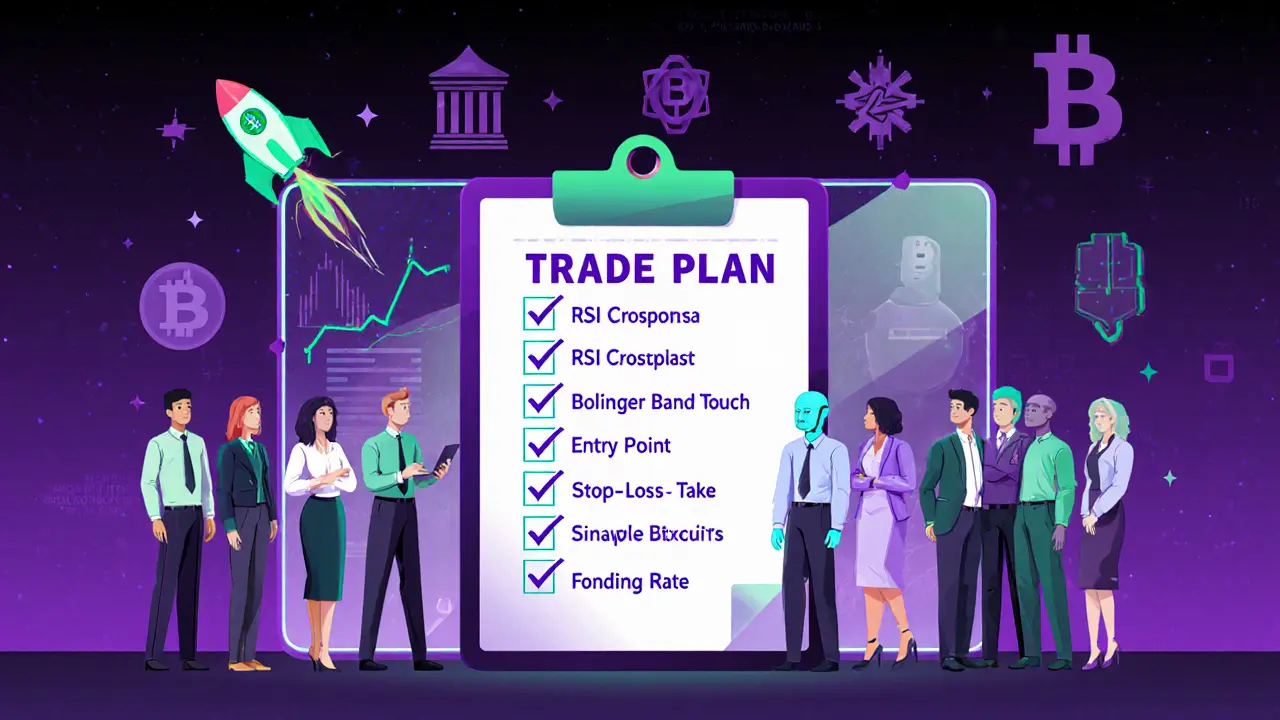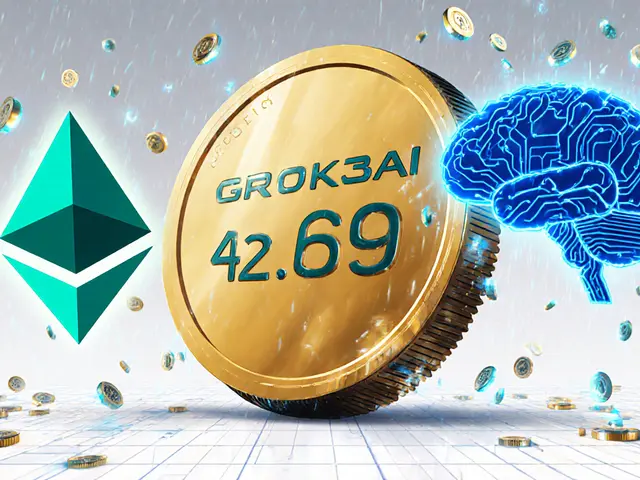Bitcoin Futures Position Calculator
Calculate Your Position Size
Determine how much BTC to trade while keeping risk within recommended limits (1-2% of account equity).
Bitcoin futures have turned the crypto market into a playground for both day‑traders and long‑term investors. Whether you’re trying to profit from a sudden price spike or protect a large BTC holding from a dip, the right strategy can make the difference between a tidy profit and a painful liquidation.
What Exactly Are Bitcoin Futures?
Bitcoin futures are contracts that let you lock in a price for Bitcoin at a future date. You don’t own the underlying coin; you simply agree to buy or sell it later at the agreed‑upon price. The first Bitcoin futures were launched by the Chicago Mercantile Exchange (CME) in December 2017, and the market has exploded ever since.
Getting Started: Directional Trading
If you’re new to futures, start with the simplest approach-directional trading. Decide whether you think BTC will rise (go long) or fall (go short) over your chosen time frame, then place a contract that matches your view. Because Bitcoin can swing 10%+ in a single day, even a modest price move can generate a sizable P&L when you’re using leverage.
Key tips for directional trades:
- Pick a clear entry point based on a technical signal.
- Set a stop‑loss no farther than 1‑2% of your total capital.
- Use modest leverage (2‑5x) until you’re comfortable with margin calls.
Advanced Hedging: Short Hedge and Long Hedge
Hedging is about protecting existing exposure. A short hedge means you take a short futures position to offset the risk of a Bitcoin price drop-useful if you already own BTC or hold a Bitcoin‑linked asset. Conversely, a long hedge locks in a purchase price for future buying, shielding you from a price surge.
Example: You plan to buy 2BTC next month, but you fear a rally. By going long on a Bitcoin futures contract now, you secure today’s price and avoid overpaying when the market spikes.
Perpetual Swaps vs Traditional Futures
Most retail traders gravitate toward perpetual swaps. Unlike standard futures, perpetual swaps never expire, so you can hold a position indefinitely-as long as you meet the margin requirements. The trade‑off is the funding rate, a periodic payment between long and short traders that keeps the contract price aligned with the spot market.
Fee‑Minimization Tactics
High‑frequency traders know that fees can eat up profits fast. Here’s how to keep costs low:
- Choose an exchange with a competitive maker‑taker schedule. Binance, BitMEX, and Bybit all offer maker fees as low as 0.02% for high‑volume traders.
- Use limit orders to capture maker rebates instead of market orders that incur taker fees.
- Participate in VIP or token‑holder programs that slash fees further-some platforms even offer 0% maker fees for elite members.
Technical Analysis: The Core of Entry & Exit Timing
Successful futures traders blend price action with quantitative indicators. Two of the most reliable tools are:
- Bollinger Bands-they show volatility bands around a moving average. When price touches the lower band, the market may be oversold; the upper band suggests overbought conditions.
- Relative Strength Index (RSI)-a momentum oscillator that flags potential reversals when it breaches the 30 (oversold) or 70 (overbought) thresholds.
Combine these with volume spikes and you have a solid entry framework.

Automation: Bots and Algorithms
Manual monitoring is exhausting on a 24/7 market. Automated trading bots can execute strategies faster than any human. Platforms like 3Commas and TradeSanta offer pre‑built Bitcoin futures bots that react to RSI crossovers, Bollinger Band breaks, or custom script triggers.
When you set up a bot, always:
- Back‑test on at least six months of historical data.
- Start with a small allocation (5‑10% of capital).
- Implement a hard stop‑loss at the bot level to prevent runaway losses.
Capital Efficiency: Leverage & Margin Management
Leverage is the double‑edged sword of futures. Platforms like Bybit and the now‑defunct FTX offered up to 100:1 leverage, meaning a 1% move can wipe out or double your position. Smart capital management includes:
- Never exceed 10% of your account equity on a single trade.
- Adjust leverage based on volatility-use lower leverage (2‑3x) during choppy weeks, higher leverage (10‑20x) only when you have a high‑conviction signal.
- Monitor the funding rate: a positive rate >0.01% can be a hidden cost when you’re long a perpetual swap.
Funding Rate Arbitrage
Occasionally the funding rate deviates enough that the price of a perpetual swap diverges from the spot market. You can capture this drift by taking opposite positions on the swap and the spot asset, then settling the difference when the rate resets. This works best on low‑liquidity contracts where the rate can swing above 0.05% per 8‑hour period.
Day‑Trading Strategies for Bitcoin Futures
Day traders thrive on short‑term volatility. A popular method is the “breakout‑and‑retrace” pattern: identify a tight range (e.g., $28,500‑$29,200), place a buy stop just above the range, then set a profit target near the 61.8% Fibonacci retracement of the breakout move. Because Bitcoin can gap 3‑5% after major news, keep the position size small and watch the order book for large trader activity.
Long‑Term Futures Holding (HODL‑Futures)
While most think of futures as short‑term tools, you can hold a contract for weeks or months-especially on platforms that allow contract rollover. This approach mirrors the classic HODL mindset: you accept daily noise, banking on Bitcoin’s historical 200%‑plus annual gains. The downside is the exposure to funding fees and potential liquidation if the market dives sharply.

Risk Management Toolkit
Every trader, regardless of strategy, needs a solid risk framework. Core components include:
- Stop‑loss orders placed at a level where your trade idea is invalidated-usually 1‑2% of account balance.
- Position sizing based on volatility: calculate the average true range (ATR) of BTC and limit risk to 1% of capital per trade.
- Diversification across other crypto futures (ETH, SOL) or even traditional commodity futures to lower correlation risk.
Sentiment Analysis: News, Regulations, and Social Media
Bitcoin reacts sharply to macro news. Events like a new SEC ruling or a major country banning crypto trading can spark 10%+ moves within hours. Tools that scrape Twitter sentiment, Reddit threads, or Google Trends can give you an early edge. For example, a sudden surge in positive sentiment scores on Reddit often precedes a bullish breakout.
Institutional Influence and the Future Outlook
Large banks-Goldman Sachs, JPMorgan, Morgan Stanley-now run dedicated Bitcoin futures desks. Their participation brings deeper liquidity and tighter spreads, making the market less prone to extreme flash crashes. Looking ahead, AI‑driven prediction models are being deployed to analyze on‑chain data, order‑book dynamics, and macro indicators in real time. Expect to see options on Bitcoin futures roll out in 2025, adding another layer of strategy (calendar spreads, iron condors) for sophisticated traders.
Putting It All Together: A Sample Trade Plan
Here’s a step‑by‑step illustration that blends several concepts discussed above:
- Identify a bullish RSI crossover (RSI moves above 30) on the 1‑hour chart.
- Confirm price is near the lower Bollinger Band, indicating oversold conditions.
- Enter a long perpetual swap with 5x leverage, allocating 2% of total capital.
- Set a stop‑loss 1.5% below entry, calculated using the ATR of the last 14 periods.
- Place a take‑profit at 3% above entry; if price reaches the target, scale out half the position and move the stop to break‑even.
- Monitor funding rate; if it turns negative (you’re receiving funding), consider holding longer to earn the fee.
By following a repeatable process, you keep emotions in check and let the strategy do the heavy lifting.
| Strategy | Typical Horizon | Key Indicator | Leverage Range | Risk Profile |
|---|---|---|---|---|
| Directional (Long/Short) | Intraday‑Few days | RSI, Moving Average Cross | 2‑10x | High - relies on price direction |
| Short Hedge | Weeks‑Months | Portfolio Exposure | 1‑5x | Medium - protects downside |
| Funding Rate Arbitrage | Hours‑Days | Funding Rate Differential | 5‑15x | Low‑Medium - depends on rate stability |
| Automated Bot (RSI‑Bollinger) | Continuous | Algorithm Rules | Variable | Medium - bot quality matters |
Quick Checklist Before You Trade
- Define your strategy (directional, hedge, arbitrage).
- Set entry, stop‑loss, and take‑profit levels.
- Choose leverage ≤10x for beginners.
- Confirm exchange fees and funding rates.
- Log the trade in a journal for post‑mortem analysis.
Frequently Asked Questions
Do I need a margin account to trade Bitcoin futures?
Yes. Futures are leveraged products, so you must open a margin account on a supported exchange. The account will hold your collateral and any unrealized P&L.
What’s the difference between a perpetual swap and a traditional Bitcoin future?
Perpetual swaps never expire, so you can hold them indefinitely as long as you meet margin requirements. Traditional futures have set expiration dates, requiring you to roll over or settle at expiry.
How can I reduce fees when trading high‑frequency Bitcoin futures?
Use limit (maker) orders, trade on tier‑based fee schedules, and consider VIP or token‑holder programs that offer rebates or zero‑maker fees.
Is it safe to use trading bots for Bitcoin futures?
Bots are safe if you back‑test them, start with a small capital slice, and enforce hard stop‑losses at the bot level. Always monitor them, especially during high‑volatility events.
Will options on Bitcoin futures change my trading approach?
Options add ways to hedge and generate income (e.g., selling puts) without risking full liquidation. They’ll let advanced traders craft multi‑leg strategies like spreads and iron condors.
Whether you stick to simple longs and shorts or dive into hedges, arbitrage, and AI‑driven bots, the key is consistency. Keep learning, log every trade, and adjust your risk parameters as the market evolves. Bitcoin futures are here to stay, and the right strategy can turn that volatility into a steady income stream.
- Poplular Tags
- Bitcoin futures
- trading strategies
- leverage
- hedging
- risk management













People Comments
Bitcoin futures let you lock in a price for BTC without having to hold the actual coin. That separation frees up capital, but it also introduces margin risk that you have to manage. The first rule of thumb is to never risk more than 1‑2% of your account on a single trade. To respect that rule, calculate your position size based on the contract’s notional and your chosen leverage. Using modest leverage-say 3‑5x for day‑trades-gives you room to breathe when the market swings. Technical entry signals work best when you combine them, for example an RSI bounce from under‑30 together with a price touch on the lower Bollinger Band. Once you have a confluence, place a stop‑loss a little below the recent swing low, using the average true range as a guide. If the trade moves in your favor, consider moving the stop to break‑even after a 1% gain to protect against sudden reversals. Funding rates on perpetual swaps can be a hidden cost or a bonus, so check the current rate before you go long. When the rate is positive, long positions will pay you; when it’s negative, you’ll be paying, which can erode profits. Hedging a spot BTC position with a short futures contract is a smart way to lock in gains while you wait for a better entry point. For longer horizons, rolling a contract before expiry avoids the need to settle and can keep you in the market with lower friction. Diversification into other crypto futures, such as ETH or SOL, reduces correlation risk and smooths the equity curve. Keep a trade journal-note the setup, entry, stop, target, and outcome-to refine your process over time. Back‑testing any bot or algorithm on at least six months of data is essential before you trust it with real capital. In the end, consistency in risk management beats any single “holy grail” strategy, and that consistency comes from disciplined execution.
The article covers a lot of ground but most of it feels like textbook fluff. I could skim the basics and still get the gist.